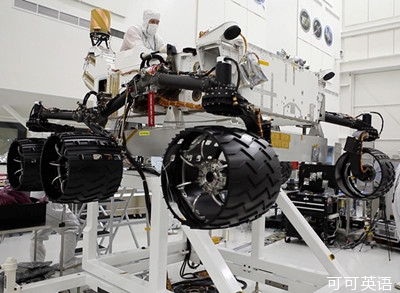The Curiosity rover has achieved plenty of firsts in its six months on Mars. And the last first is especially noteworthy: on February 9th, Curiosity made the inaugural run of its drill, boring into a rock to extract a sample from the interior. It thus became the first robot ever to drill on Mars.
好奇號探測車登陸月球六個月內實現了許多“第一次”。而最后一個“第一次”尤其值得關注:2月9號好奇號探測車首次運行它的鉆孔機以提取巖石內部的樣本。由此它成為第一個在火星上鉆探的機器人。

Curiosity has now gotten some use from most of its science instruments, but not all of them are working. At a conference at U.C.L.A., deputy project scientist Ashwin Vasavada explained that problems are facing the rover's wind and humidity sensors:
目前,好奇號探測車的大部分科學工具都已經派上用場,但并非所有的都能運行。在加州大學洛杉磯分校的一次會議上,副項目科學家 Ashwin Vasavada 解釋說探測車的風和濕度傳感器存在著問題:
“The humidity sensor is being calibrated. They think it's going to produce some good data—it's measuring a good signal. It's just the physical units don't quite make sense right now.”
“濕度傳感器被預先標定了。他們原以為它在測量清晰信號時,會生成好的數據。只是現在的物理單位不太合理。”
Worse is the wind sensor, damaged during the rover's landing. “The wind sensor is actually six different sensors. We lost two of them during landing, and the other four are proving pretty hard to interpret as well. So we actually have no wind data yet.”
風傳感器的情況更糟,它在探測車著陸期間受到損壞。風傳感器實際上由六個不同的傳感器組成,著陸時弄壞了兩個,其他四個也很難進行測量。因此我們目前還沒有關于風的數據。
A few glitches are to be expected. After all, the Curiosity rover—with its unprecedented size and complexity—is a first in and of itself.
存在幾個小故障在預料之中。畢竟憑借前所未有的尺寸和復雜性,好奇號探測車本身就是第一個。












